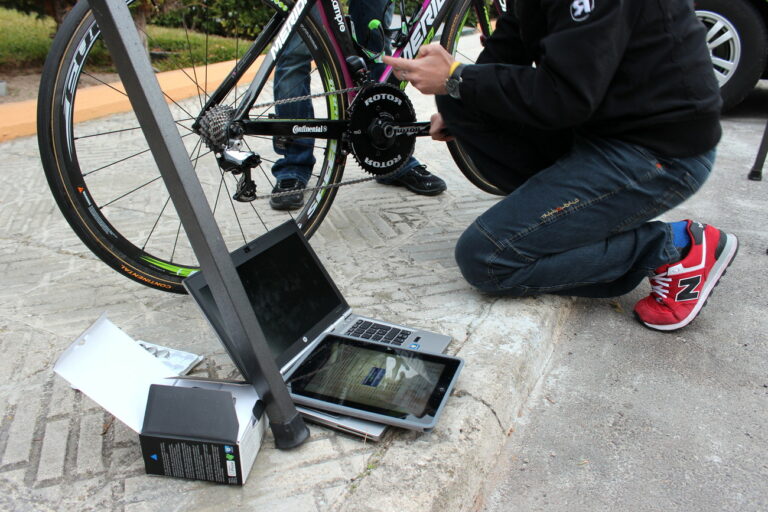Adjustment of the rear derailleur is sometimes necessary to maintain fast, accurate, and reliable shifting across the cassette.
We caught up with Jon Hayes, mechanic at independent bike shop, Ride, to get the lowdown on methods to ensure the rear derailleur in a mechanical drivetrain functions effectively.
A conventional, mechanical rear mech is equipped with a series of simple mechanisms to adjust its travel and the tension of the cable that controls it, and Jon addresses each in this edit.
He begins with a visual check of the rear derailleur and its hanger to make sure neither has been damaged – a common cause of shifting issues at the cassette. Having satisfied himself that nothing is damaged, Jon seeks other causes for a shifting issue that prevents the chain from reaching the smallest and the largest sprockets.
Jon disconnects the cable from the rear derailleur, removing the issue of cable tension from his enquiries. His investigation now focusses on the set stop screws. The high set stop screw – marked with an ‘H’ – takes care of shifting into higher gears (smaller sprockets), while the low set stop screw – marked with an ‘L’ – takes care of the shifting into the lower gears (larger sprockets).
Small adjustments are the way forward, Jon advises – half, or quarter turns. Too greater adjustment of the set stop screws can cause a still greater problem, driving the chain into the spokes or jamming it in the small gap between the cassette and the frame.
Having adjusted the set stop screws, Jon turns his attention to the ‘B tension’ screw – one that adjusts the proximity of the rear derailleur’s top jockey wheel to the cassette. Adjusting the screw so the top jockey wheel is positioned close to the cassette can help to ensure a crisp shift, Jon explains. Installing a larger cassette, perhaps for a mountainous, European sportive, may create too small a gap. By turning the B-tension screw in a clockwise direction, the derailleur moves downwards, creating a larger gap between cassette and top jockey wheel.
With the set stop and B-tension screws adjusted, Jon reconnects the cable, tightening it with a 5mm Allen bolt. As he does so, he adjusts the cable tension barrel adjuster, winding it ‘in’, until it butts against the derailleur, and then winding it ‘out’ by one-and-a-half turns. “It gives you a little bit of scope so you can adjust ‘out’ and back ‘in’ as well,” he says.
Jon completes the procedure by checking the function of the gears, and ensuring that one press of the dual control lever delivers a single shift. He makes some minor adjustments to the cable tension using the barrel adjuster to deliver a series of crisp, accurate shifts across the cassette.





